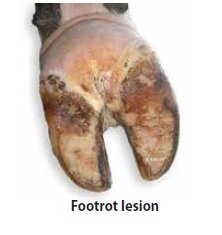Footrot as a Component of Lameness
/Footrot accounts for approximately 10% of lameness in the dairy herd. It is caused by bacterial invasion of the soft tissue between the claws after injury to the interdigital skin. The initial injury is often caused by stones lodging between the claws. These are most often picked up at gateways and at water troughs, or along the edges of tracks – especially later in the season as track deterioration can become an issue.
Treatment of footrot is straightforward and normally very successful. Remove the stone if it is still there, clean between the claws with iodine or antiseptic and inject with procaine penicillin. Anti-inflammatories will speed up recovery too.
Prevention is a more important aspect of footrot management. Foot baths are the easiest way to keep things under control.
The whole herd should be treated twice a week during risk periods with either 5% Copper Sulphate or 5-10% Zinc Sulphate. Construction of the footbath is important to ensure a successful outcome. It should allow for good cow flow and be a permanent feature of the shed exit. It should be no less than 2.5m long and no longer than 3m to ensure the cow places all 4 feet in the bath and to reduce contamination. With these dimensions, on average, 3-4 cows per 100 defecate in the bath, so it stays relatively clean. The easiest way to construct the footbath, is with concrete blocks on top of the exit race, with a drain in the lowest corner for easy emptying. The volume of the bath should be one litre per cow and should be at least 8-10cm deep.
With good footbath design and targeted prevention, footrot numbers and the concurrent antibiotic use will be kept to a minimum. Should you have any further queries about footbath design or footrot control, please get in touch with one of our Healthy Hoof Advisers.




